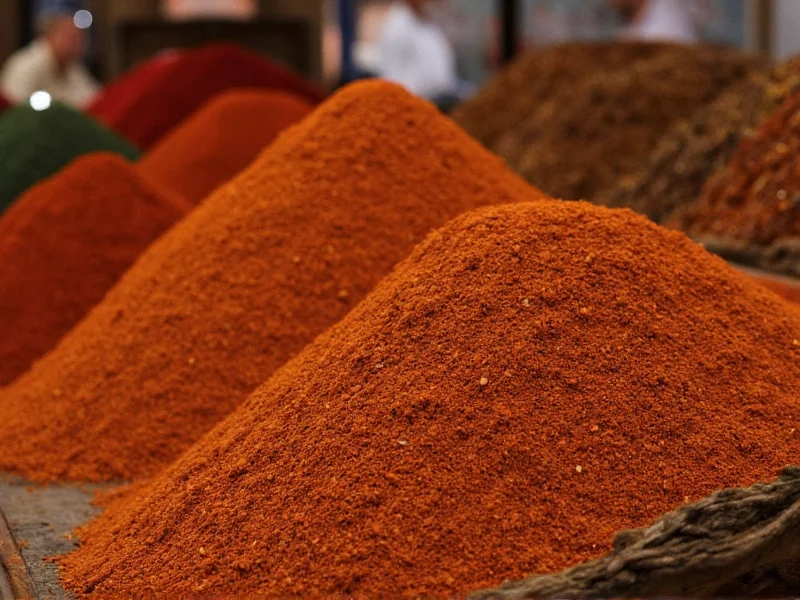Saffron's position as the world's most expensive spice isn't just a marketing claim—it's an economic reality rooted in biology and labor economics. Each saffron thread represents hours of meticulous human work under specific climatic conditions. Unlike machine-harvested spices, saffron requires skilled workers to carefully pluck the three delicate red stigmas from each purple crocus flower at precisely the right moment during a short autumn blooming season.
The Labor-Intensive Harvesting Process That Drives Saffron's Price
The primary reason saffron commands such extraordinary prices lies in its harvesting process. Each Crocus sativus flower produces only three stigmas, which must be hand-picked at dawn when the flowers are still closed to preserve quality. Workers must carefully separate these fragile threads from each blossom without damaging them—a task requiring exceptional dexterity.
To produce just one kilogram (2.2 pounds) of dried saffron, harvesters must collect and process approximately 150,000 flowers. This translates to 400,000 individual stigmas. During peak harvest season, workers often labor 12-15 hours daily in fields, making saffron harvesting one of agriculture's most labor-intensive processes. The entire harvest window lasts merely 2-3 weeks each year, creating a narrow production window that cannot be extended regardless of market demand.
Geographical Limitations and Climate Requirements
Saffron cultivation is restricted to specific regions with particular climate conditions—primarily Iran, which produces over 90% of the world's supply, followed by smaller quantities from Spain, India, and Greece. The crocus flowers require hot, dry summers and cold winters, with well-drained soil and minimal rainfall during the flowering period.
These geographical constraints mean saffron cannot be mass-produced in industrial agricultural settings like most other spices. Attempts to cultivate saffron outside traditional regions typically yield inferior quality or fail completely, maintaining the spice's exclusivity. Climate change poses additional challenges, with unpredictable weather patterns affecting annual yields and contributing to price volatility in the saffron market.
Quality Grading and Price Variations
Not all saffron carries the same price tag. The spice is graded according to ISO 3632 standards based on crocin (color), picrocrocin (taste), and safranal (aroma) content. The highest grade, Category I, features deep red threads with minimal yellow style and commands premium prices.
| Saffron Grade | Coloring Strength | Price Per Pound | Characteristics |
|---|---|---|---|
| Category I (Super Negin) | 250+ (highest) | $3,000-$5,000 | Pure red threads, strongest aroma, no yellow styles |
| Category II (Sargol) | 200-250 | $2,000-$3,000 | Red threads only, slightly less intense color |
| Pushal | 150-200 | $1,000-$2,000 | Red threads with some yellow styles attached |
| Bunch (Daste) | 80-150 | $500-$1,000 | Threads still attached to yellow styles, lower potency |
Historical Context of Saffron's Value
Saffron's status as a luxury item spans millennia. Ancient Egyptians used it as a medicinal treatment, while Persian royalty scattered it across palace floors. During the Middle Ages, saffron was worth more than its weight in gold and was frequently stolen—a crime punishable by death in some European regions.
The spice played a significant role in global trade routes, with the famous Via Saffrona connecting Mediterranean markets to Central Asia. In 14th century Europe, the Saffron War erupted when a merchant's wagon carrying the precious spice was stolen, demonstrating how seriously societies valued this crimson treasure.
Saffron vs. Other Expensive Spices
While saffron reigns supreme in spice pricing, several other spices command premium prices. Understanding how saffron compares to these alternatives provides context for its extraordinary value:
- Vanilla: The second most expensive spice globally, with premium Bourbon vanilla reaching $600 per pound. Though labor-intensive to produce, vanilla orchids yield more per plant than saffron crocuses.
- Cardamom: Sometimes called the "Queen of Spices," premium green cardamom costs $20-$40 per pound—significantly less than saffron despite requiring hand-harvesting.
- Long Pepper: An ancient spice regaining popularity, priced around $50 per pound for high-quality varieties.
- Grains of Paradise: A West African spice selling for approximately $30 per pound.
The price disparity becomes even more dramatic when comparing usage rates. While you might use a teaspoon of vanilla or cardamom in a recipe, saffron is measured in individual threads—typically 10-20 threads provide sufficient flavor and color for four servings of paella. This extreme potency further justifies saffron's premium pricing when considered on a per-use basis.
Authenticating Genuine Saffron
Given saffron's high value, adulteration is common in the marketplace. Consumers seeking the world's most expensive spice should know how to identify authentic product:
- Visual inspection: Genuine saffron consists of deep red threads with slight orange tips, never uniformly colored. Avoid powders unless from a trusted source, as these are most commonly adulterated.
- Water test: Place threads in warm water—they should gradually release a golden-yellow color over 15-20 minutes. Immediate intense coloring suggests artificial dyes.
- Aroma test: Authentic saffron has a distinctive honey-like, hay-like fragrance. Chemical or musty odors indicate poor quality or adulteration.
- Price reality check: If saffron seems too cheap (under $5 per gram), it's almost certainly not pure. Real saffron's production costs simply won't allow for bargain pricing.
Modern Applications Beyond Culinary Use
While saffron's primary use remains in gourmet cuisine—adding distinctive flavor and golden color to dishes like Spanish paella, Italian risotto, and Persian rice—the spice has gained attention for potential health benefits. Recent scientific studies have investigated saffron's properties for mood regulation, with some research suggesting it may have antidepressant effects comparable to certain pharmaceuticals.
The spice also maintains traditional uses in textile dyeing, where its colorfast properties create luxurious golden hues, and in perfumery, where its complex aroma profile adds depth to high-end fragrances. These diverse applications contribute to global demand that consistently outstrips supply, maintaining saffron's position as the most expensive spice on earth.











 浙公网安备
33010002000092号
浙公网安备
33010002000092号 浙B2-20120091-4
浙B2-20120091-4